Shunqing Zhang
Senior Member, IEEE
Energy Optimization of Multi-task DNN Inference in MEC-assisted XR Devices: A Lyapunov-Guided Reinforcement Learning Approach
Jan 05, 2025Abstract:Extended reality (XR), blending virtual and real worlds, is a key application of future networks. While AI advancements enhance XR capabilities, they also impose significant computational and energy challenges on lightweight XR devices. In this paper, we developed a distributed queue model for multi-task DNN inference, addressing issues of resource competition and queue coupling. In response to the challenges posed by the high energy consumption and limited resources of XR devices, we designed a dual time-scale joint optimization strategy for model partitioning and resource allocation, formulated as a bi-level optimization problem. This strategy aims to minimize the total energy consumption of XR devices while ensuring queue stability and adhering to computational and communication resource constraints. To tackle this problem, we devised a Lyapunov-guided Proximal Policy Optimization algorithm, named LyaPPO. Numerical results demonstrate that the LyaPPO algorithm outperforms the baselines, achieving energy conservation of 24.79% to 46.14% under varying resource capacities. Specifically, the proposed algorithm reduces the energy consumption of XR devices by 24.29% to 56.62% compared to baseline algorithms.
IREE Oriented Active RIS-Assisted Green communication System with Outdated CSI
Nov 17, 2024



Abstract:The rapid evolution of communication technologies has spurred a growing demand for energy-efficient network architectures and performance metrics. Active Reconfigurable Intelligent Surfaces (RIS) are emerging as a key component in green network architectures. Compared to passive RIS, active RIS are equipped with amplifiers on each reflecting element, allowing them to simultaneously reflect and amplify signals, thereby overcoming the double multiplicative fading in the phase response, and improving both system coverage and performance. Additionally, the Integrated Relative Energy Efficiency (IREE) metric, as introduced in [1], addresses the dynamic variations in traffic and capacity over time and space, enabling more energy-efficient wireless systems. Building on these advancements, this paper investigates the problem of maximizing IREE in active RIS-assisted green communication systems. However, acquiring perfect Channel State Information (CSI) in practical systems poses significant challenges and costs. To address this, we derive the average achievable rate based on outdated CSI and formulated the corresponding IREE maximization problem, which is solved by jointly optimizing beamforming at both the base station and RIS. Given the non-convex nature of the problem, we propose an Alternating Optimization Successive Approximation (AOSO) algorithm. By applying quadratic transform and relaxation techniques, we simplify the original problem and alternately optimize the beamforming matrices at the base station and RIS. Furthermore, to handle the discrete constraints of the RIS reflection coefficients, we develop a successive approximation method. Experimental results validate our theoretical analysis of the algorithm's convergence , demonstrating the effectiveness of the proposed algorithm and highlighting the superiority of IREE in enhancing the performance of green communication networks.
LinFormer: A Linear-based Lightweight Transformer Architecture For Time-Aware MIMO Channel Prediction
Oct 28, 2024



Abstract:The emergence of 6th generation (6G) mobile networks brings new challenges in supporting high-mobility communications, particularly in addressing the issue of channel aging. While existing channel prediction methods offer improved accuracy at the expense of increased computational complexity, limiting their practical application in mobile networks. To address these challenges, we present LinFormer, an innovative channel prediction framework based on a scalable, all-linear, encoder-only Transformer model. Our approach, inspired by natural language processing (NLP) models such as BERT, adapts an encoder-only architecture specifically for channel prediction tasks. We propose replacing the computationally intensive attention mechanism commonly used in Transformers with a time-aware multi-layer perceptron (TMLP), significantly reducing computational demands. The inherent time awareness of TMLP module makes it particularly suitable for channel prediction tasks. We enhance LinFormer's training process by employing a weighted mean squared error loss (WMSELoss) function and data augmentation techniques, leveraging larger, readily available communication datasets. Our approach achieves a substantial reduction in computational complexity while maintaining high prediction accuracy, making it more suitable for deployment in cost-effective base stations (BS). Comprehensive experiments using both simulated and measured data demonstrate that LinFormer outperforms existing methods across various mobility scenarios, offering a promising solution for future wireless communication systems.
Towards Dynamic Resource Allocation and Client Scheduling in Hierarchical Federated Learning: A Two-Phase Deep Reinforcement Learning Approach
Jun 21, 2024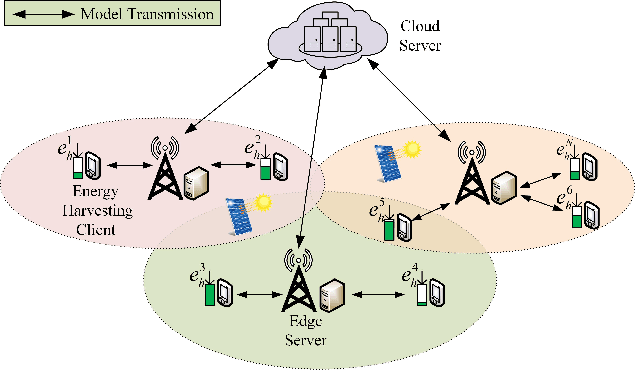
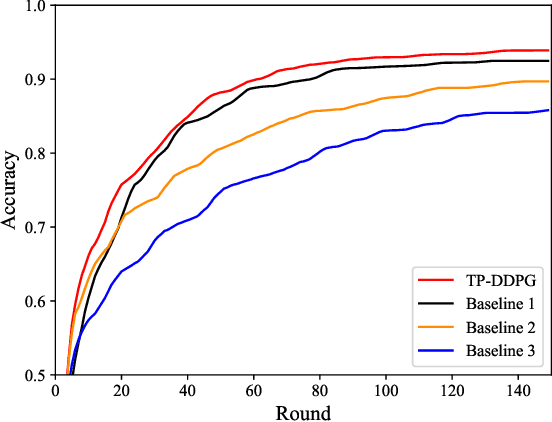
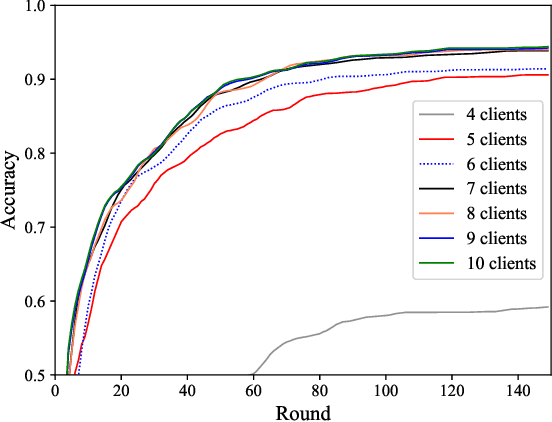
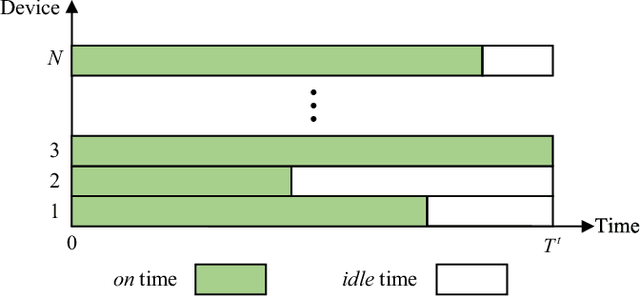
Abstract:Federated learning (FL) is a viable technique to train a shared machine learning model without sharing data. Hierarchical FL (HFL) system has yet to be studied regrading its multiple levels of energy, computation, communication, and client scheduling, especially when it comes to clients relying on energy harvesting to power their operations. This paper presents a new two-phase deep deterministic policy gradient (DDPG) framework, referred to as ``TP-DDPG'', to balance online the learning delay and model accuracy of an FL process in an energy harvesting-powered HFL system. The key idea is that we divide optimization decisions into two groups, and employ DDPG to learn one group in the first phase, while interpreting the other group as part of the environment to provide rewards for training the DDPG in the second phase. Specifically, the DDPG learns the selection of participating clients, and their CPU configurations and the transmission powers. A new straggler-aware client association and bandwidth allocation (SCABA) algorithm efficiently optimizes the other decisions and evaluates the reward for the DDPG. Experiments demonstrate that with substantially reduced number of learnable parameters, the TP-DDPG can quickly converge to effective polices that can shorten the training time of HFL by 39.4% compared to its benchmarks, when the required test accuracy of HFL is 0.9.
Quality of Experience Oriented Cross-layer Optimization for Real-time XR Video Transmission
Apr 15, 2024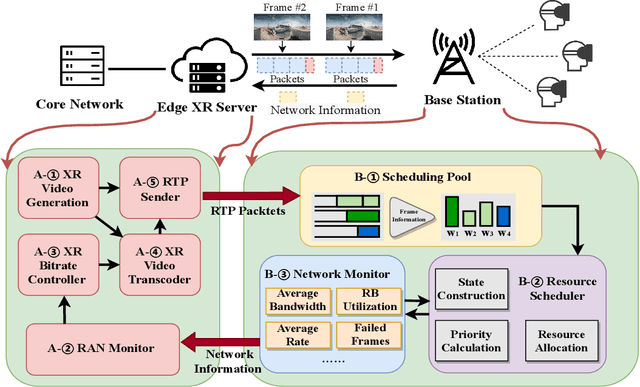
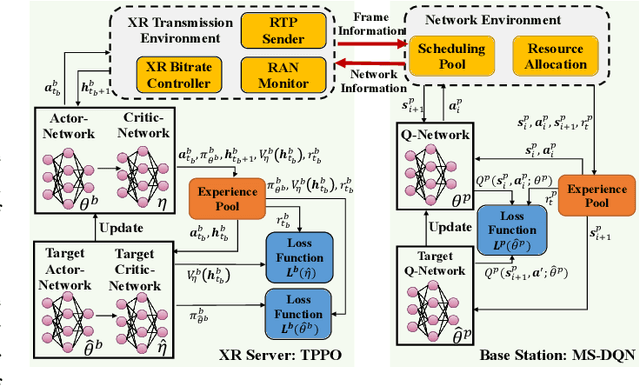
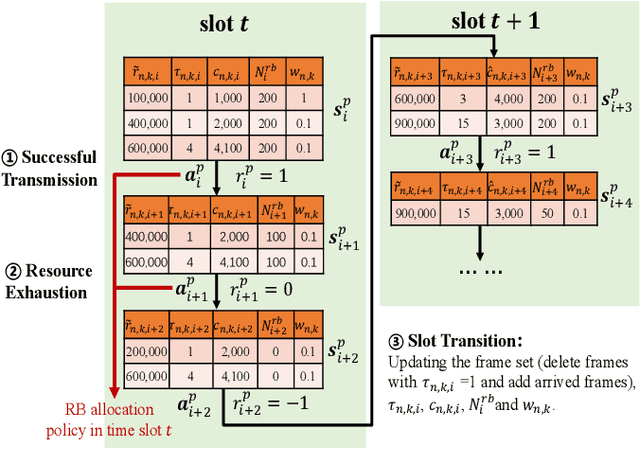
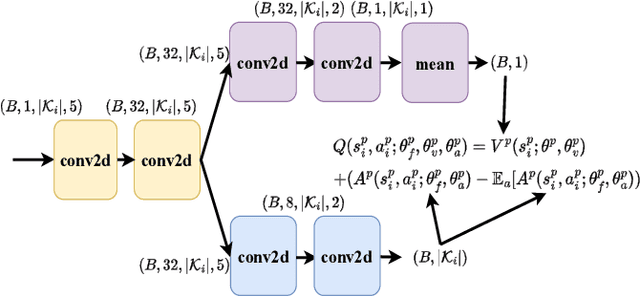
Abstract:Extended reality (XR) is one of the most important applications of beyond 5G and 6G networks. Real-time XR video transmission presents challenges in terms of data rate and delay. In particular, the frame-by-frame transmission mode of XR video makes real-time XR video very sensitive to dynamic network environments. To improve the users' quality of experience (QoE), we design a cross-layer transmission framework for real-time XR video. The proposed framework allows the simple information exchange between the base station (BS) and the XR server, which assists in adaptive bitrate and wireless resource scheduling. We utilize the cross-layer information to formulate the problem of maximizing user QoE by finding the optimal scheduling and bitrate adjustment strategies. To address the issue of mismatched time scales between two strategies, we decouple the original problem and solve them individually using a multi-agent-based approach. Specifically, we propose the multi-step Deep Q-network (MS-DQN) algorithm to obtain a frame-priority-based wireless resource scheduling strategy and then propose the Transformer-based Proximal Policy Optimization (TPPO) algorithm for video bitrate adaptation. The experimental results show that the TPPO+MS-DQN algorithm proposed in this study can improve the QoE by 3.6% to 37.8%. More specifically, the proposed MS-DQN algorithm enhances the transmission quality by 49.9%-80.2%.
Fairness Optimization for Intelligent Reflecting Surface Aided Uplink Rate-Splitting Multiple Access
Mar 15, 2024Abstract:This paper studies the fair transmission design for an intelligent reflecting surface (IRS) aided rate-splitting multiple access (RSMA). IRS is used to establish a good signal propagation environment and enhance the RSMA transmission performance. The fair rate adaption problem is constructed as a max-min optimization problem. To solve the optimization problem, we adopt an alternative optimization (AO) algorithm to optimize the power allocation, beamforming, and decoding order, respectively. A generalized power iteration (GPI) method is proposed to optimize the receive beamforming, which can improve the minimum rate of devices and reduce the optimization complexity. At the base station (BS), a successive group decoding (SGD) algorithm is proposed to tackle the uplink signal estimation, which trades off the fairness and complexity of decoding. At the same time, we also consider robust communication with imperfect channel state information at the transmitter (CSIT), which studies robust optimization by using lower bound expressions on the expected data rates. Extensive numerical results show that the proposed optimization algorithm can significantly improve the performance of fairness. It also provides reliable results for uplink communication with imperfect CSIT.
Real-time Extended Reality Video Transmission Optimization Based on Frame-priority Scheduling
Feb 08, 2024


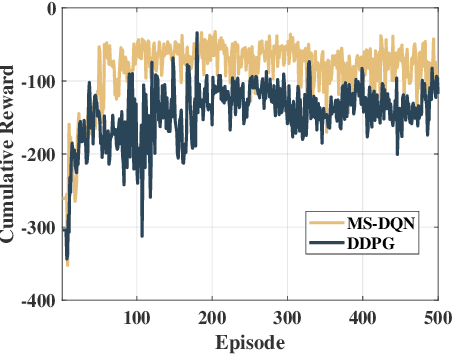
Abstract:Extended reality (XR) is one of the most important applications of 5G. For real-time XR video transmission in 5G networks, a low latency and high data rate are required. In this paper, we propose a resource allocation scheme based on frame-priority scheduling to meet these requirements. The optimization problem is modelled as a frame-priority-based radio resource scheduling problem to improve transmission quality. We propose a scheduling framework based on multi-step Deep Q-network (MS-DQN) and design a neural network model based on convolutional neural network (CNN). Simulation results show that the scheduling framework based on frame-priority and MS-DQN can improve transmission quality by 49.9%-80.2%.
A Variational Auto-Encoder Enabled Multi-Band Channel Prediction Scheme for Indoor Localization
Sep 19, 2023


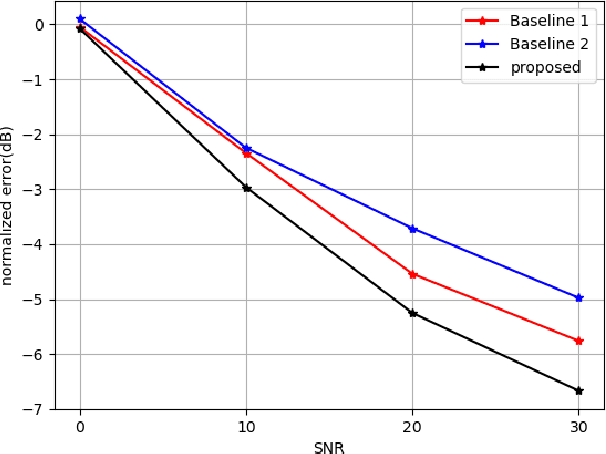
Abstract:Indoor localization is getting increasing demands for various cutting-edged technologies, like Virtual/Augmented reality and smart home. Traditional model-based localization suffers from significant computational overhead, so fingerprint localization is getting increasing attention, which needs lower computation cost after the fingerprint database is built. However, the accuracy of indoor localization is limited by the complicated indoor environment which brings the multipath signal refraction. In this paper, we provided a scheme to improve the accuracy of indoor fingerprint localization from the frequency domain by predicting the channel state information (CSI) values from another transmitting channel and spliced the multi-band information together to get more precise localization results. We tested our proposed scheme on COST 2100 simulation data and real time orthogonal frequency division multiplexing (OFDM) WiFi data collected from an office scenario.
Reconfigurable Intelligent Surface Aided Space Shift Keying With Imperfect CSI
Sep 06, 2023Abstract:In this paper, we investigate the performance of reconfigurable intelligent surface (RIS)-aided spatial shift keying (SSK) wireless communication systems in the presence of imperfect channel state information (CSI). Specifically, we analyze the average bit error probability (ABEP) of two RIS-SSK systems respectively based on intelligent reflection and blind reflection of RIS. For the intelligent RIS-SSK scheme, we first derive the conditional pairwise error probability of the composite channel through maximum likelihood (ML) detection. Subsequently, we derive the probability density function of the combined channel. Due to the intricacies of the composite channel formulation, an exact closed-form ABEP expression is unattainable through direct derivation. To this end, we resort to employing the Gaussian-Chebyshev quadrature method to estimate the results. In addition, we employ the Q-function approximation to derive the non-exact closed-form expression when CSI imperfections are present. For the blind RIS-SSK scheme, we derive both closed-form ABEP expression and asymptotic ABEP expression with imperfect CSI by adopting the ML detector. To offer deeper insights, we explore the impact of discrete reflection phase shifts on the performance of the RIS-SSK system. Lastly, we extensively validate all the analytical derivations using Monte Carlo simulations.
A Hard and Soft Hybrid Slicing Framework for Service Level Agreement Guarantee via Deep Reinforcement Learning
Mar 06, 2022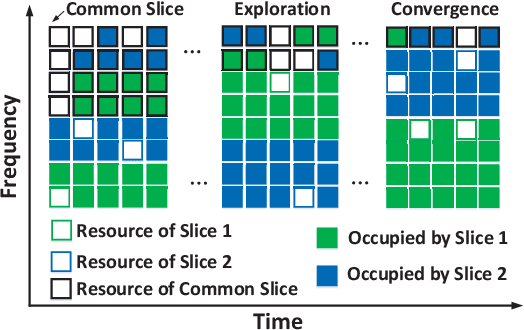
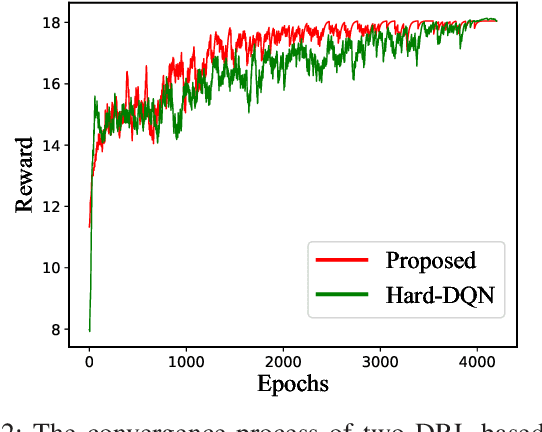
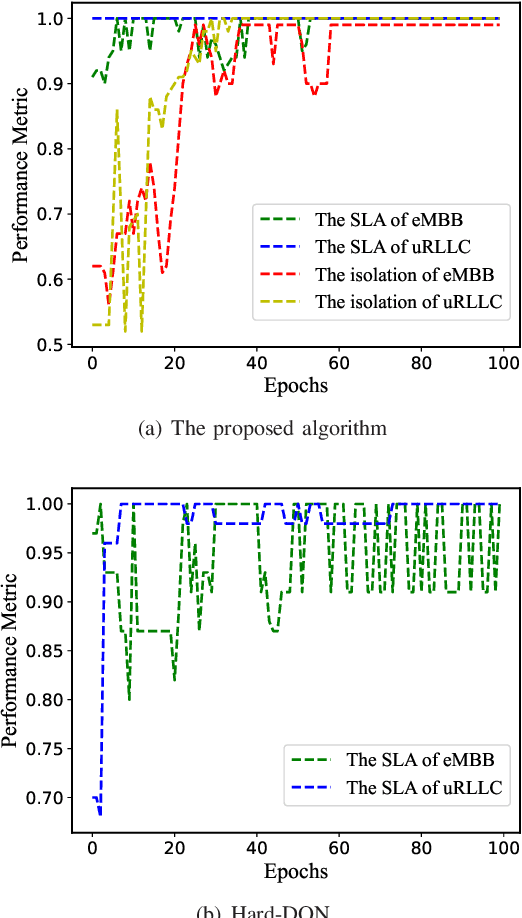
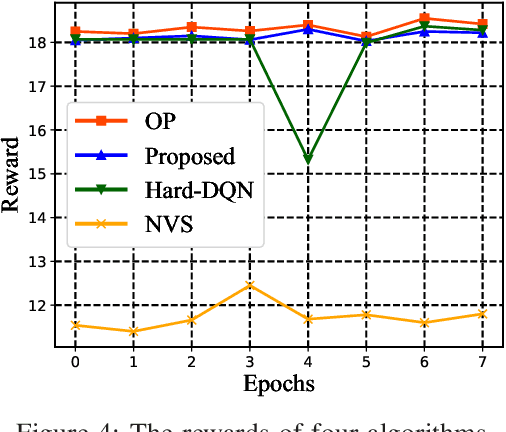
Abstract:Network slicing is a critical driver for guaranteeing the diverse service level agreements (SLA) in 5G and future networks. Recently, deep reinforcement learning (DRL) has been widely utilized for resource allocation in network slicing. However, existing related works do not consider the performance loss associated with the initial exploration phase of DRL. This paper proposes a new performance-guaranteed slicing strategy with a soft and hard hybrid slicing setting. Mainly, a common slice setting is applied to guarantee slices' SLA when training the neural network. Moreover, the resource of the common slice tends to precisely redistribute to slices with the training of DRL until it converges. Furthermore, experiment results confirm the effectiveness of our proposed slicing framework: the slices' SLA of the training phase can be guaranteed, and the proposed algorithm can achieve the near-optimal performance in terms of the SLA satisfaction ratio, isolation degree and spectrum maximization after convergence.
 Add to Chrome
Add to Chrome Add to Firefox
Add to Firefox Add to Edge
Add to Edge